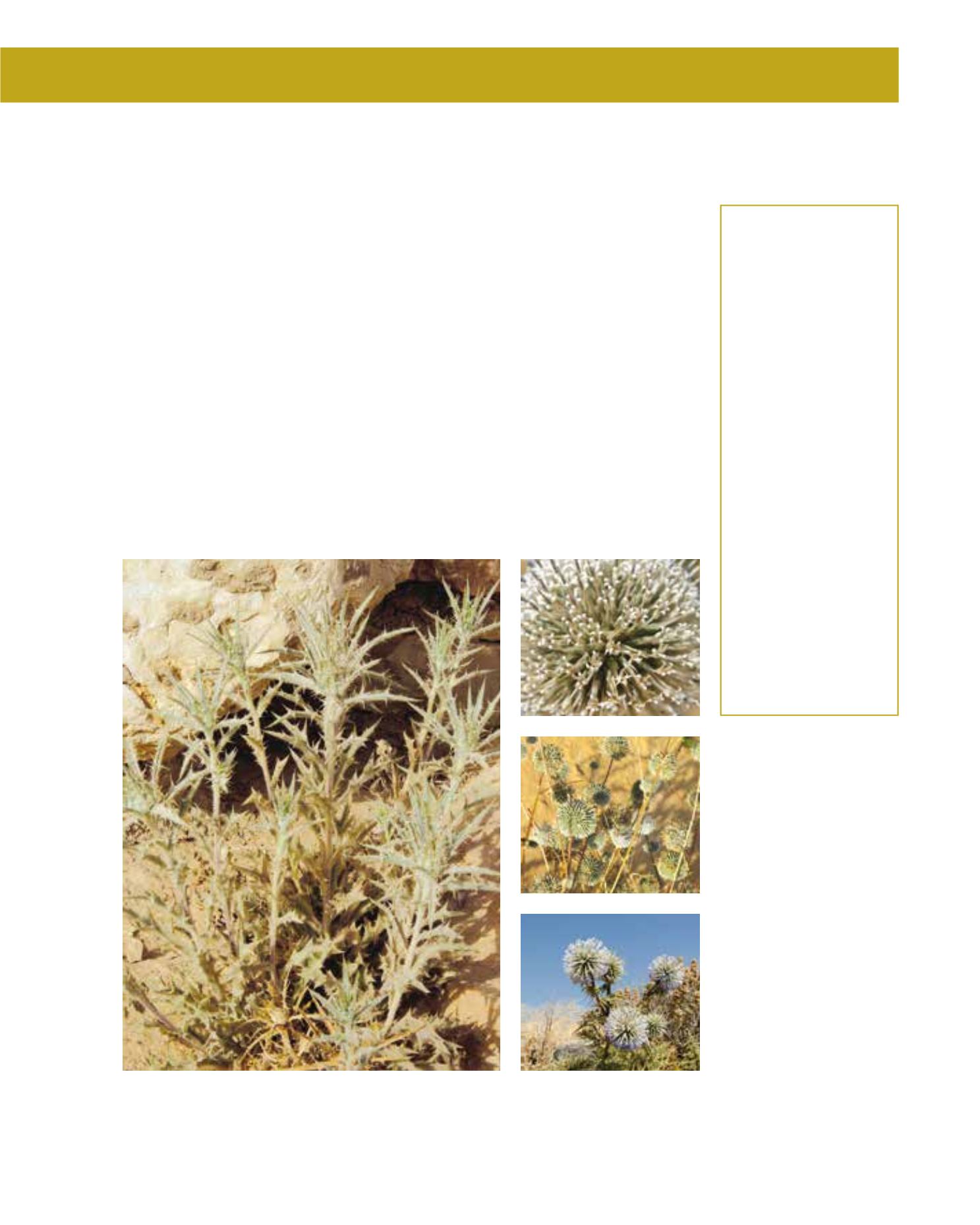

GENERAL
Origin
:
Mediterranean
Humidity
:
extremely arid,
very arid, semi-
arid
Propagation :
direct sowing,
sowing and
pricking out
Maintenance :
low
CONDITIONS
Urban climate :
resistant
Dessication :
resistant
Stagnant water :
vulnerable
Irrigation
:
none
Salinity/ppm :
low (1000 ppm)
Hardiness
:
-12°C
SHAPE
Type
:
perennial
Height
:
0.7 m-1 m
Spread
:
0.4 m-0.6 m
Foliage
:
deciduous
FLOWER
Colour
:
white, pastel blue
Size
:
6 cm
Period
:
September -
November
FRUIT
Type of fruit :
achene
Fruit size
:
1.2 cm
This species of Echinops is also known as Desert Thistle. It is to be found throughout the Medi-
terranean, Middle East and on the Arabian peninsula, and is often seen in Arriyadh and the sur-
rounding region. Like E. hussoni, it is a perennial, but a higher species growing up to 90 or 100
cm. The difference also lies in the flowers. ‘Spinosissimus’ indicates the shape of the long spines
which protrude from the globed bloom. The spiny leaves are also much denser and pointed, in
contrast to other Globe Thistles. Propagation is by seed. A very undemanding plant, it is useful
for planting in desert conditions and extensive landscapes, where it can provide relatively dense
cover on stony ground and is attractive in all seasons.
134
Echinops spinosissimus,
Asteraceae
Globe Thistle
















